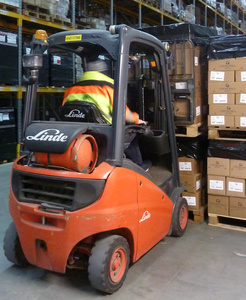
Kelly Rose
Editor

Kelly Rose
Editor
Double stacking of pallets doubles the effective storage area and transport loading density so there is a massive incentive. However, incorrect double stacking greatly increases risk.
AEC Designs provides a guide to successful double stacking.
Successful double stacking relies on the base pallet load being sufficiently strong to carry the load of the pallet above. In palletised carton loads all the strength is provided by the walls of the cartons, which are only strong in compression. Any sideways forces will cause the cardboard to deform and ultimately collapse. Once one carton wall starts to collapse the other cartons are sharing a greater portion of the load, so adjacent cartons are also likely to collapse. Added to this the upper pallet load will start to lean applying further load to the already weakened side of the carton stack.


31 Crewe Road
Alsager
ST7 2EY
UNITED KINGDOM
01782 900 259